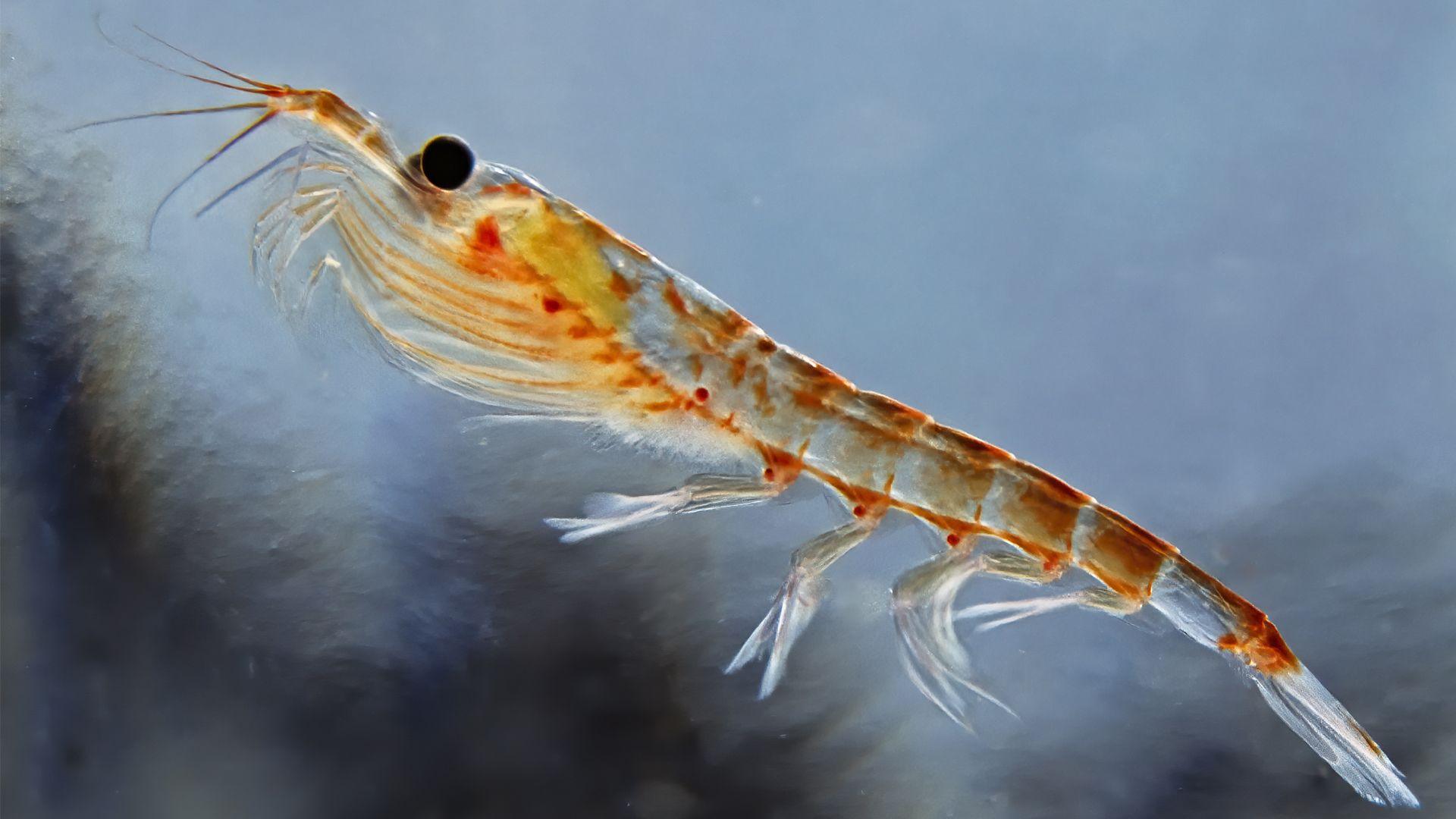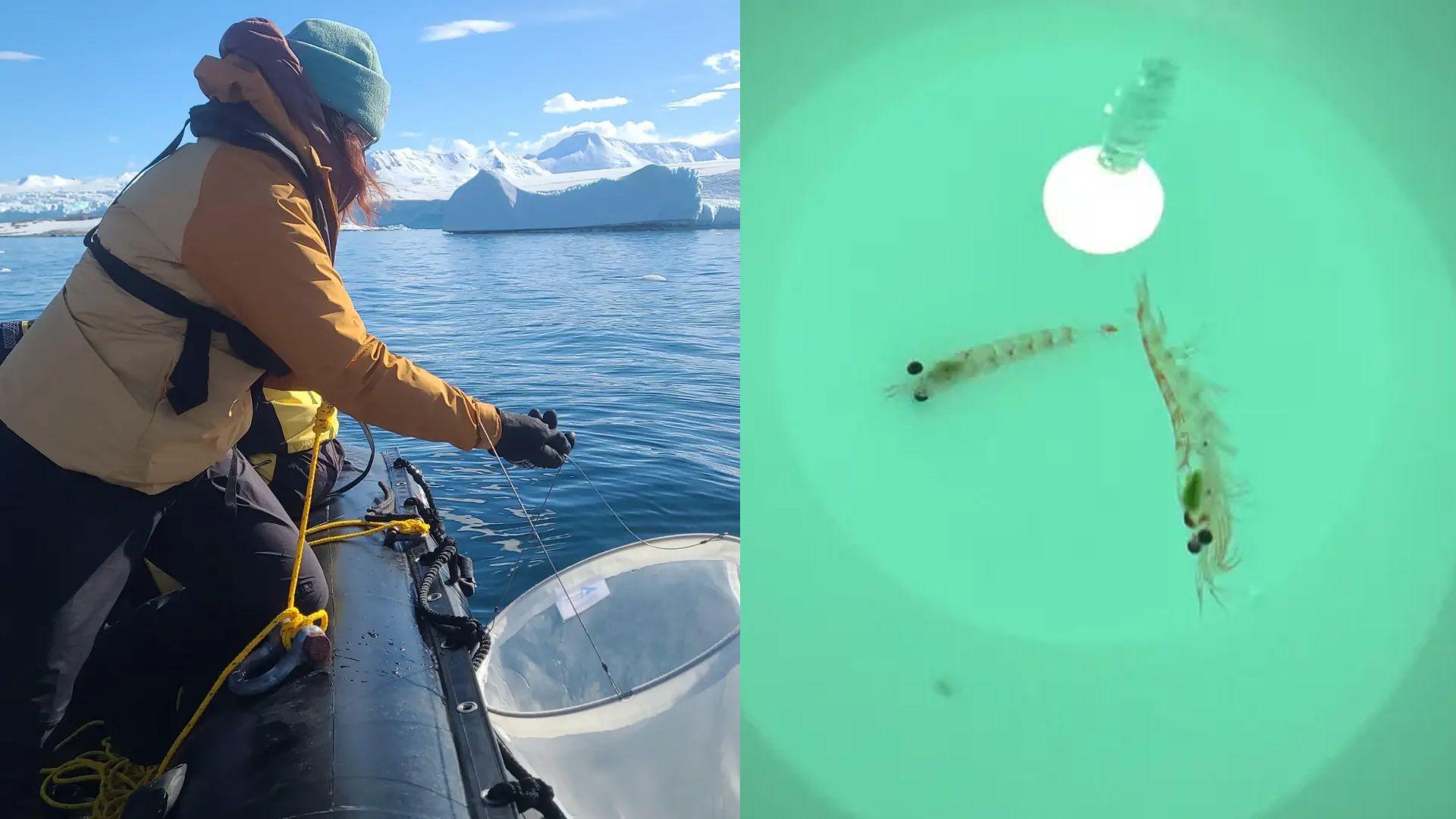Why are scientists counting tiny Antarctic sea creatures from Space?

These tiny creatures, have a big impact on our oceans
- Published
A team of scientists have been using the colour of seawater to help count tiny Antarctic sea creatures from miles above.
They're studying krill, a type of crustacean, which can be found in all oceans on Earth.
Despite being the size of a paperclip, krill are one of the most important creatures on Earth.
They are a hugely important part of the food chain and many ocean creatures depend on them to survive - including the world's biggest animal - the blue whale.
But conservation scientists are worried that fishing and climate change could be having a negative impact on krill, and say we need new ways to keep an eye the creatures numbers in the wild.
Meet the tiny swimming robot inspired by krill
- Published21 February 2022
Whales' food is moving south - and it's a problem
- Published22 January 2019

Dr Cait McCarry catching krill in a net in Antarctica in order to study the animals
"Antarctic krill are the superheroes of the Southern Ocean," said Rod Downie, chief polar adviser at the wildlife charity WWF-UK.
"They are tiny, unsung heroes that sustain incredible marine life, but climate change and unsustainable fishing are putting them at risk."
Researchers from the University of Strathclyde, WWF and the British Antarctic Survey (BAS) teamed up to work on a new way to work out how many krill are in the ocean around Antarctica, using satellites.
They have been doing this by looking at the differences in how much light the seawater absorbs, depending on how many krill are swimming in the water.
By looking at how the amount of krill in the water changes the colour of the water, researchers can monitor the krill population from satellites.
"We start with seawater, then we add in a krill and take a measurement [of how much light the water absorbs]," explains Dr Cait McCarry, from the University of Strathclyde, who helped with the research.
"Then we add another krill and take another measurement."
